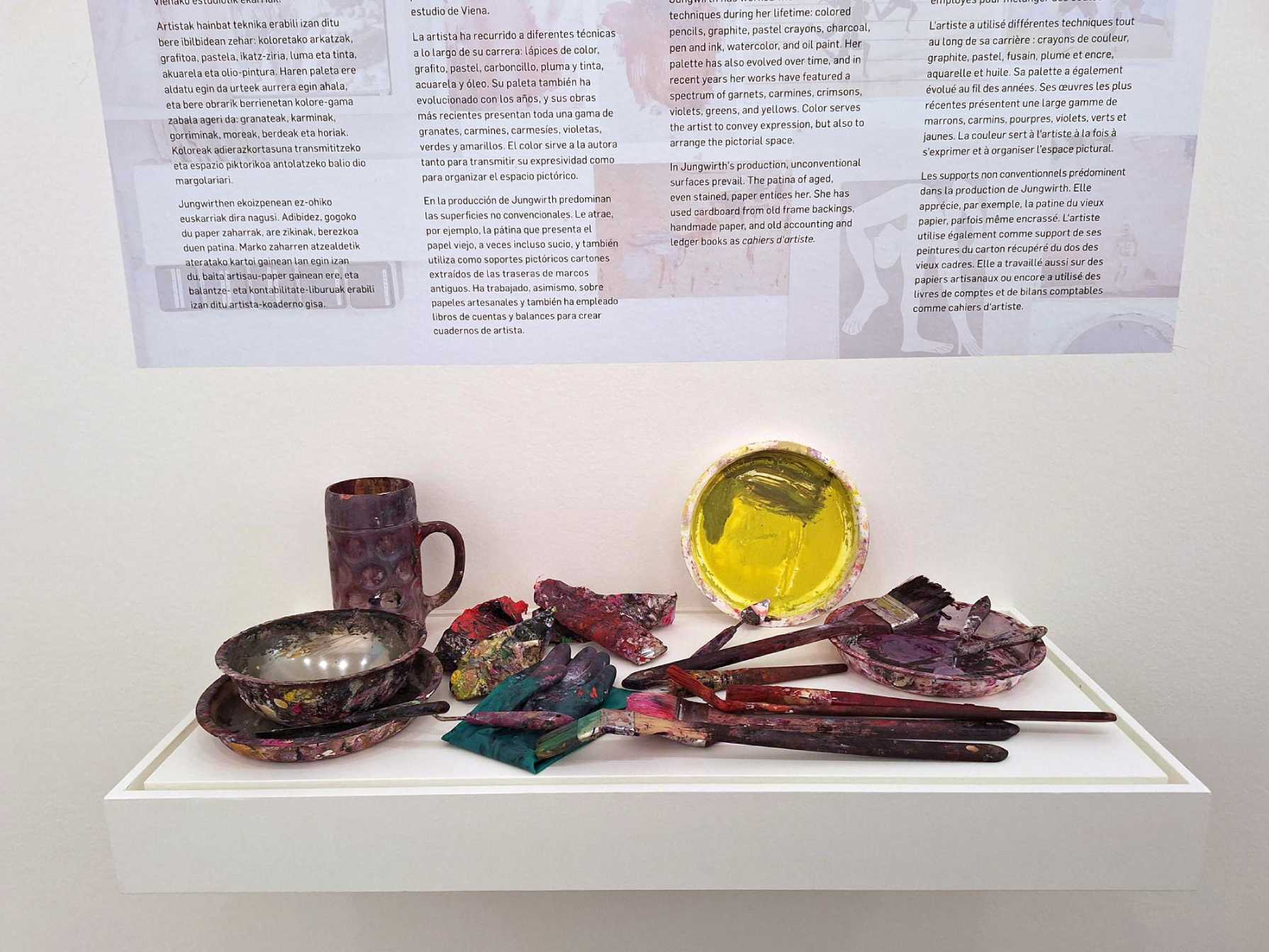
The vitrine in the Museum’s Didaktika space presents a selection of Jungwirth’s personal tools and materials: an array of brushes, oil tubes, and mixing bowls from her studio in Vienna.
Jungwirth has worked with different techniques during her lifetime: colored pencils, graphite, pastel crayons, charcoal, pen and ink, watercolor, and oil paint. Her palette has also evolved over time, and in recent years her works have featured a spectrum of garnets, carmines, crimsons, violets, greens, and yellows. Color serves the artist to convey expression, but also to arrange the pictorial space.
In Jungwirth’s production, unconventional surfaces prevail. The patina of aged, even stained, paper entices her. She has used cardboard from old frame backings, handmade paper, and old accounting and ledger books as cahiers d‘artiste.
This brief chronology shows the different techniques that Jungwirth has explored throughout his career:
1956-63. Studies at the Academy of Applied Arts in Vienna, focusing on drawing from life.
1967-77. Teaches at the Academy of Applied Arts in Vienna, encouraging students to portray objects from everyday life, e.g., an onion or a sewing machine, using pen or ink sketching as their sole techniques.
1968. Only female member of the group of Viennese artists known as Wirklichkeiten (Realities). Makes colored pencil and watercolor representations of female nudes, technological gadgets, and race cars.
1974. Following a trip to New York, gives up watercolors to focus on line drawing, working with pencils and charcoal. Her series Indesit, named after the Italian manufacturer, shows washing machines and other domestic appliances.
1980. Makes large-size watercolor paintings, often rotating the paper in different directions.
1986. Uses oil diluted with turpentine for her paintings, applying thin layers on cardboard to produce a finish similar to that of watercolors.
1995. During a summer stay on the Greek islands of Naxos and Paros, experiments with whitewash in her drawings and paints watercolor landscapes in old account books.
2004. After traveling to Burma and Cambodia, begins her series of vertical watercolor paintings using handmade textured paper.
2019. Designs The Trojan Horse, a monumental oil painting (16 square meters) for the safety curtain of the Vienna State Opera.
